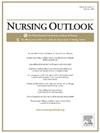Impact of minority stress and resilience on post-traumatic stress disorder symptom severity among a sample of transgender, nonbinary, and gender-expansive individuals
IF 3.7
2区 医学
Q1 NURSING
引用次数: 0
Abstract
Background
Transgender, nonbinary, and gender-expansive (TNGE) individuals experience disproportionately high levels of discrimination and violence. These chronic stressors can disrupt stress responses and increase vulnerability to negative mental health outcomes.
Purpose
The purpose of this research was to explore the impact of gender minority stress and resilience on post-traumatic stress disorder (PTSD) symptom severity among TNGE individuals receiving outpatient medical or psychiatric care.
Methods
Individuals (N = 103) receiving gender-affirming healthcare services at one of two university-affiliated practice settings completed an anonymous survey measuring PTSD symptom severity and gender minority stress and resilience.
Results
One-third of participants met provisional criteria for PTSD. No significant differences in PTSD symptoms were found based on assigned sex at birth, current gender identity, marital status, sexual orientation, or race/ethnicity. Distal stressor subscales accounted for approximately 40% of variance in PTSD symptom severity in a hierarchical regression model. Proximal stressors and resilience subscales accounted for an additional 7% and 3% of variance, respectively.
Discussion
TNGE individuals’ experiences of gender minority stress, especially distal stressors, may constitute risk factors for PTSD. Interventions to foster community engagement may offer valuable mental health benefits for TNGE persons.
跨性别、非二元性和性别扩张个体样本中少数民族压力和心理弹性对创伤后应激障碍症状严重程度的影响
跨性别者、非二元性别者和性别膨胀者(TNGE)经历了不成比例的高度歧视和暴力。这些慢性压力源会破坏压力反应,增加对负面心理健康结果的脆弱性。目的探讨性别少数派应激和心理弹性对接受门诊医疗或精神科治疗的TNGE个体创伤后应激障碍(PTSD)症状严重程度的影响。方法在两所大学附属诊所之一接受性别肯定医疗服务的个人(N = 103)完成了一项匿名调查,测量PTSD症状严重程度和性别少数群体的压力和恢复力。结果三分之一的参与者符合PTSD的临时标准。出生时指定的性别、当前的性别认同、婚姻状况、性取向或种族/民族在PTSD症状方面没有发现显著差异。在层次回归模型中,远端应激源亚量表约占创伤后应激障碍症状严重程度方差的40%。近端压力源和弹性分量表分别占方差的7%和3%。tnge个体的性别少数压力经历,尤其是远端压力源,可能构成PTSD的危险因素。促进社区参与的干预措施可能为TNGE人提供宝贵的心理健康益处。
本文章由计算机程序翻译,如有差异,请以英文原文为准。
求助全文
约1分钟内获得全文
求助全文
来源期刊

Nursing Outlook
医学-护理
CiteScore
6.20
自引率
7.00%
发文量
109
审稿时长
25 days
期刊介绍:
Nursing Outlook, a bimonthly journal, provides innovative ideas for nursing leaders through peer-reviewed articles and timely reports. Each issue examines current issues and trends in nursing practice, education, and research, offering progressive solutions to the challenges facing the profession. Nursing Outlook is the official journal of the American Academy of Nursing and the Council for the Advancement of Nursing Science and supports their mission to serve the public and the nursing profession by advancing health policy and practice through the generation, synthesis, and dissemination of nursing knowledge. The journal is included in MEDLINE, CINAHL and the Journal Citation Reports published by Clarivate Analytics.
 求助内容:
求助内容: 应助结果提醒方式:
应助结果提醒方式:


